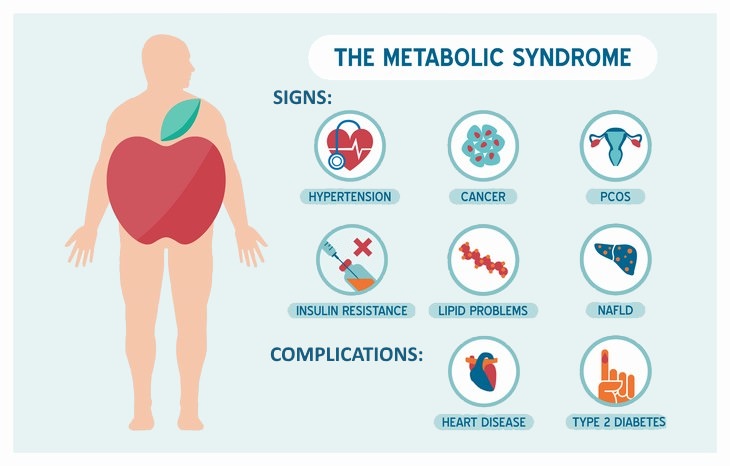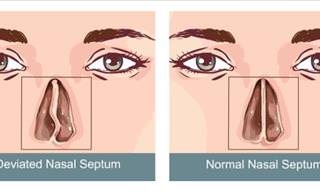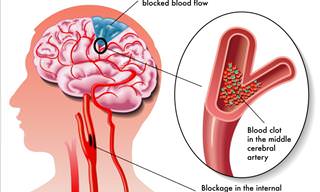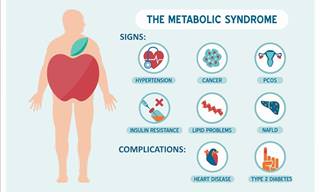Signs and Symptoms
Metabolic syndrome occurs as a result of an abnormal way your body processes and distributes energy, hence the link to metabolism. An early sign of metabolic syndrome is central obesity or the accumulation of excess body weight in the waist and trunk area. The term is used synonymously with the so-called "apple body shape", illustrated below.
People with central obesity are overweight (have a BMI of 25 or more), but they have slim limbs and a round belly. A waist circumference over 37 inches (94 cm) in males or over 31.5 inches (80 cm) in females can be considered as central obesity and can be a reason for your doctor to test you for metabolic syndrome, especially if you're over 50 years old.
Apart from central obesity, metabolic syndrome at its early stages is asymptomatic and the remaining signs of the condition are usually discovered during routine health checks. These signs include:
- High blood pressure (130/85 and more)
- Insulin resistance
- Abnormal glucose levels
- Low HDL cholesterol levels
- High triglyceride levels.
At more advanced stages, symptoms similar to diabetes can occur, such as fatigue, blurred vision, increased thirst, and urination. Keep in mind that having any one of these signs and symptoms doesn’t mean you have metabolic syndrome, a person is diagnosed with the condition only when they exhibit all or most of these signs.
Complications. A lack of treatment and weight management can result in severe complications, such as the development of type 2 diabetes and heart disease (heart attack, coronary heart disease, etc.). Alarmingly, metabolic syndrome is considered to be the greatest predictor of these conditions. Recent research also established a possible link between metabolic syndrome and cognitive decline and dementia.
Causes and Risk Factors
As we have mentioned in the introduction, about 25% of the population suffer from metabolic syndrome, but the distribution of patients is not random, and some people have a higher risk of developing metabolic syndrome than others. The following increase your chance of suffering from metabolic syndrome:
- Age. The older you get, the more likely you are to suffer from metabolic syndrome, with 60% of Americans over the age of 50 being diagnosed with the syndrome.
- Obesity. Overweight individuals are significantly more likely to suffer from metabolic syndrome, with obesity being the second largest risk factor after age.
- Ethnicity. Ethnic minorities, particularly Hispanic women have the greatest risk of having metabolic syndrome in the United States.
- Other diseases. People with a family history of diabetes, or those suffering from sleep apnea, fatty liver disease, or polycystic ovary syndrome are more likely to suffer from metabolic syndrome.
As for the causes of metabolic syndrome, they are a matter of active medical research, but we know that a sedentary lifestyle, being overweight and stress are all significant contributing factors. In particular, a diet rich in omega-6 fats (saturated fats) and added sugar, especially sweet drinks, was associated with the condition. Medical research also shows that good lifestyle choices can delay and prevent the progression of metabolic syndrome.
Prevention and Treatment

To treat metabolic syndrome, your doctor will address each symptom you exhibit separately, likely prescribing medications to treat hypertension and manage cholesterol. These are prescription medications necessary for you to take to prevent the dangerous complications of metabolic syndrome. But since one of the main known causes of metabolic syndrome is inactivity and being overweight, healthy lifestyle choices can help prevent it.
A healthy diet and exercise are likely to improve prediabetic symptoms, too, if you already have the syndrome. Although a licensed dietitian and your doctor will be able to give you the best recommendations, here are some basic, and yet effective, lifestyle choices you can make to prevent and manage the development of the disease:
1. Be physically active for at least 30 minutes most days.
2. Eat a lot of whole grains, vegetables, fruits, and lean protein.
3. Limit the amount of saturated and trans fat, as well as salt.
4. Stay away from sweetened beverages.
5. Strive towards keeping a healthy weight.
6. Don't smoke or drink alcohol.
 Go to BabaMail
Go to BabaMail



























